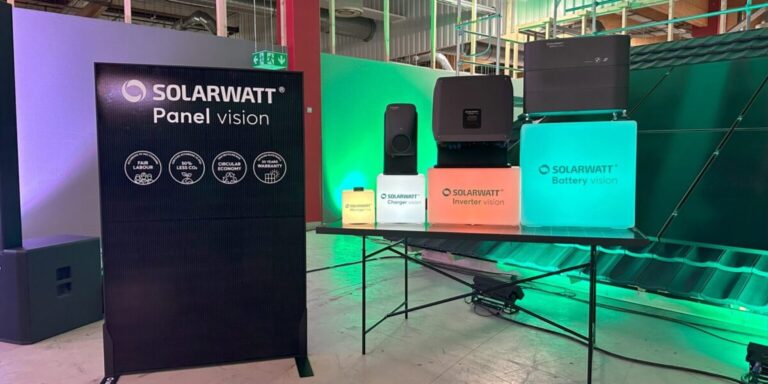Solarwatt has launched six new inverters and batteries as part of its Solarwatt Home line and set out its future strategy. The German company, which is currently in a transition phase, recently closed its solar module factory in Germany and announced a workforce reduction.
Solarwatt has been active in the field of system integration for more than ten years, starting with an energy management system that included both its own devices and products from partners. Now the company is expanding its range with its own new products: an inverter, a battery, two wall boxes and two updated energy management systems.
“In addition to Germany, the Vision portfolio will be available in Austria, Switzerland, Great Britain plus Ireland, the Netherlands, Belgium, Luxembourg, France, Spain and Italy,” a company spokesperson said. pv magazine.
The company is deepening its partnership with BMW, focusing on battery development and design, with the latter handled by BMW’s California-based Designworks. Solarwatt also continues its collaboration with Kiwigrid for energy management and Stiebel Eltron for heat pump solutions.
Six products
The new 15 kW Solar Vision inverter can be connected up to a power of 30 kW, according to product manager Peter Bachmann. Multiple units can be connected in parallel to support even higher output requirements. This inverter also has an emergency power function and a switch cabinet.
The new Battery Vision uses stackable individual modules, with a capacity range from 5.2 kWh to 182 kWh. BMW, using its expertise in car purchasing, helped select suppliers, and the battery has a BMW logo.
Solarwatt has also launched the Solarwatt Charger wallbox, available in two versions: Solarwatt Vision and Solarwatt Charger Max. Both offer the same core features, but the Charger Max also supports bi-directional charging.
The Solarwatt Manager energy management system is available in two models: one for DIN rail installation in a meter cupboard and a standalone version that only requires an in-house internet connection for integration with other components.
Solarwatt’s energy management system offers advanced features including seamless heat pump integration. Soon it will support dynamic electricity rates by accessing real-time exchange rates. It can also connect to virtual power plants, although Solarwatt does not supply the plant itself, instead providing open interfaces to give customers flexibility. Bachmann noted the continued development of startups and other players in this space, although there is no open interface provider yet.
Solarwatt outsources the production of its inverter and battery to Asian manufacturers because European suppliers cannot match them on costs. These products are adapted to Solarwatt’s specifications and do not come from our own suppliers, with only adapted housings. Solarwatt’s previously launched TOPCon (tunnel oxide passivated contact) modules also come from Asia, with the company closely involved in component selection. Bachmann has personally vetted suppliers, from silicon mines to wafer factories, for quality control.
The company prioritizes easy installation and offers installers an app to streamline installation. For example, the system only requires one meter for all components instead of multiple units.
With the new product range in addition to the wholesale offering, Solarwatt wants to regain momentum after a challenging year, according to company data. The company closed its 300 MW solar panel manufacturing facility in Dresden, Germany in August.
The German market for PV systems under 30 kW has fallen from 7.8 GW to 6.1 GW, with prices falling from €2,350 ($2,520) in 2023 to €1,950 in 2024, according to CEO Benjamin Frank, who spoke in July joined. This price drop, together with reduced demand, has resulted in sales falling from approximately €300 million in 2023 to €130 million so far this year, taking into account Solarwatt’s recent exit from module production.
The company aims to achieve a turnover of € 150 million next year with new products. While the core PV segment has struggled, Solarwatt’s systems above 30 kW have seen positive growth through 2024.
The economic downturn and strategic shift have impacted Solarwatt’s workforce. The company employed 850 people in 2023, but plans to reduce its workforce to 350 next year, with 100 in planning, consultancy and sales and 160 at Solarwatt sites. For laid-off workers, a transfer program with retraining has placed about 50% in new positions, mainly through job fairs, Frank said.
This content is copyrighted and may not be reused. If you would like to collaborate with us and reuse some of our content, please contact: editors@pv-magazine.com.


